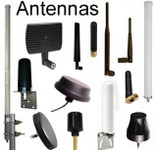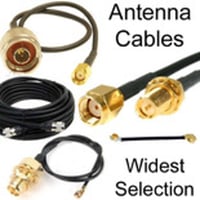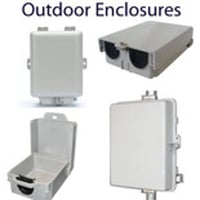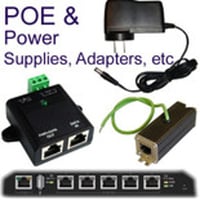Adapters with RP-TNC Connector(s)
RPTNC Cable Couplers, Joiners, Gender-Changers, Adapters
RP-TNC adapters have become integral in the world of wireless technologies. These adapters, which stand for Reverse Polarity Threaded Neil-Concelman, offer specific advantages and features that make them essential for many communication setups. Let's delve into the various aspects of RP-TNC adapters, understanding their role, and what sets them apart.
Associated Wireless Technologies
RP-TNC connectors are commonly associated with a variety of wireless technologies. Most notably, these include:
- WiFi: Often, enterprise-grade wireless access points use RP-TNC connectors due to their reliability and performance.
- RF (Radio Frequency) Applications: This includes two-way radios, antennas, and other devices that operate in the RF spectrum.
- Satellite Communication: The strength and reliability of RP-TNC connectors make them suitable for satellite-based setups.
Torque Ratings
The torque rating of an RP-TNC adapter refers to the force applied when attaching it to ensure an optimal connection. These connectors typically have a torque rating of around 8 inch-pounds. Proper torque ensures good electrical contact and prevents potential damage to the adapter or the mating interface.
Key Features
Several unique features of RP-TNC adapters make them stand out:
- Reverse Polarity: Unlike standard TNC connectors, RP-TNC connectors have their genders reversed. This means the male connector has an internal pin, while the female connector has an external pin.
- Secure Connections: These adapters provide a threaded connection, ensuring a secure and reliable linkage.
- Low Signal Loss: RP-TNC adapters are designed to minimize signal degradation, thus offering optimum performance.
- Flexibility: These adapters are compatible with various devices, making integration seamless.
Materials Composition
Quality RP-TNC adapters are typically made using:
- Brass or Stainless Steel Body: This offers strength, durability, and corrosion resistance.
- Gold Plated Contacts: Enhances conductivity and reduces signal loss.
- Teflon Insulator: Ensures resistance to high temperatures and provides excellent insulation properties.
Types
There are different types of RP-TNC adapters based on their configuration and purpose:
- Straight Adapters: For direct connections without any bends.
- Right-Angle Adapters: Useful in spaces with limited accessibility or when there's a need to redirect the connection angle.
- Bulkhead Adapters: Designed to pass through panels or enclosures.
- Extension Adapters: Used to extend the length of a connection.
Applications
RP-TNC adapters find usage in a plethora of applications, including:
- Networking: Enterprise-grade wireless routers and access points.
- Telecommunication: Cellular towers and radio communication setups.
- Aviation: For communication and navigation systems in aircraft.
- Research: In labs and institutions for various wireless communication experiments.
- Defense: Military communication devices often utilize RP-TNC for robust and secure connections.
In conclusion, RP-TNC adapters are a versatile and pivotal component in the realm of wireless technology. Their reliability, coupled with their compatibility across a multitude of devices, solidifies their importance. Whether you're setting up a state-of-the-art research lab, an enterprise-grade WiFi network, or a two-way radio communication system, the odds are you'll come across these connectors, attesting to their ubiquity and relevance in today's wireless landscape







